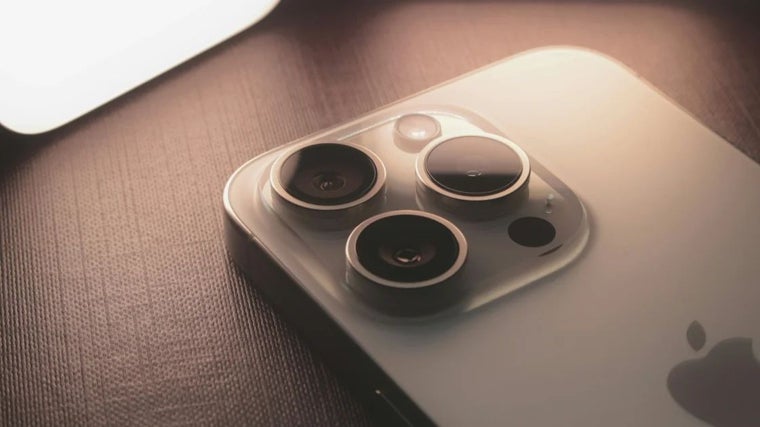From Steve Jobs to the Cook era: how the iPhone has evolved over the years
It's hard to find a tech event that generates as much interest as Apple's keynotes every September. Year after year, Apple fans are glued to their screens to discover the latest developments in mobile phones from Cupertino. This Tuesday, September 9, Tim Cook, the company's CEO, will unveil the new version of its flagship: the iPhone 17 , many details of which are already known thanks to leaks.
The world has changed a lot since Steve Jobs introduced the first iPhone in January 2007. By then, Apple had already achieved milestones like the Macintosh in 1984 and the iPod in 2001; the next step was obvious: a mobile phone. When Jobs introduced it during the launch event, he made his vision clear. In his opinion, the smartphones that existed until then were neither as smart nor as easy to use. He ironically noted that all the devices had "small plastic keyboards" and offered basic email and internet functions, but that was it. The goal was clear: to create a different, intuitive, and powerful smartphone, with the screen as its centerpiece.
The first iPhone had a quiet launch, with a six-month delay following its introduction due to development issues. However, it sold 6.1 million units in its first fifteen months. Its successor, the iPhone 3G, improved connectivity and was the first to be marketed in Spain. It also introduced the App Store, which transformed the mobile ecosystem by offering downloadable applications for all users. The iPhone 3GS, introduced later, incorporated a 3-megapixel camera and the letter "S" for "Speed," introducing the use of letters to differentiate devices of the same generation.
In 2010, the iPhone 4 arrived, featuring one of the most recognizable designs in mobile phone history thanks to its sharper edges and thinner body. It also introduced the 1 GHz A4 processor and 512 MB of RAM. New apps like iBooks, GameCenter, and iMovie expanded the device's capabilities. The following year, the iPhone 4S consolidated internal improvements and was the first to be introduced under Tim Cook's leadership.
Under the Cook era, Apple continued to refine its strategy. The iPhone 5 expanded the screen to 4 inches and added Passbook and its own mapping system, albeit with some stumbles compared to Google Maps. In 2013, Apple surprised everyone by introducing two models simultaneously: the cheaper 5C and the 5S, which incorporated Touch ID and the first 64-bit processor in a smartphone, marking a technical milestone.
The iPhone 6 and 6 Plus, launched in 2014, offered 4.7-inch and 5.5-inch displays, respectively, and the ability to make payments using Touch ID, popularizing mobile payments. The 6S and 6S Plus, a year later, added 3D Touch technology, which allowed users to open different options depending on the pressure exerted on the screen, from opening web links to activating the calendar with a long touch.
With the iPhone 7 and 7 Plus (2016), Apple improved the camera and water resistance, added stereo speakers, and eliminated the headphone jack, replacing it with a Lightning connector. Although the design followed the same lines as previous generations, the internal changes and the improved touch experience through a new haptic system were significant.
In 2017, Apple released three models: iPhone 8, 8 Plus and X. The latter marked a notable design change: it removed the front button and reduced the notch, laying the groundwork for the design of subsequent models, including the XS and iPhone 11. With the iPhone 12, the company introduced 5G connectivity and the Mini model, which disappeared with the iPhone 14 , replaced by the Plus, with a larger screen but similar capabilities to the base model.
 The iPhone X
The iPhone X
With the iPhone 15 , Apple refined the design and brought some exclusive features from the iPhone 14 Pro models to the more basic models. Among them, the Dynamic Island on the front screen: an interactive interface located in the camera area that allows the user to interact with various applications easily. The Pro models incorporated a configurable haptic button, called the action button, which allows, for example, to quickly activate the camera or turn on the flashlight. Beyond these new features, the evolution was continuous, the same as occurred with the iPhone 16 , which maintained the Dynamic Island and reinforced improvements in performance and photography.
 The iPhone 16 Pro
ABC
The iPhone 16 Pro
ABC
In just one day, Apple will launch its new iPhone 17 family, which aims to incorporate design changes. The main new feature is expected to be the arrival of a new device called the Air, which is expected to be the thinnest (5.5 millimeters thick) of all the devices Apple has sold to date.
ABC.es





